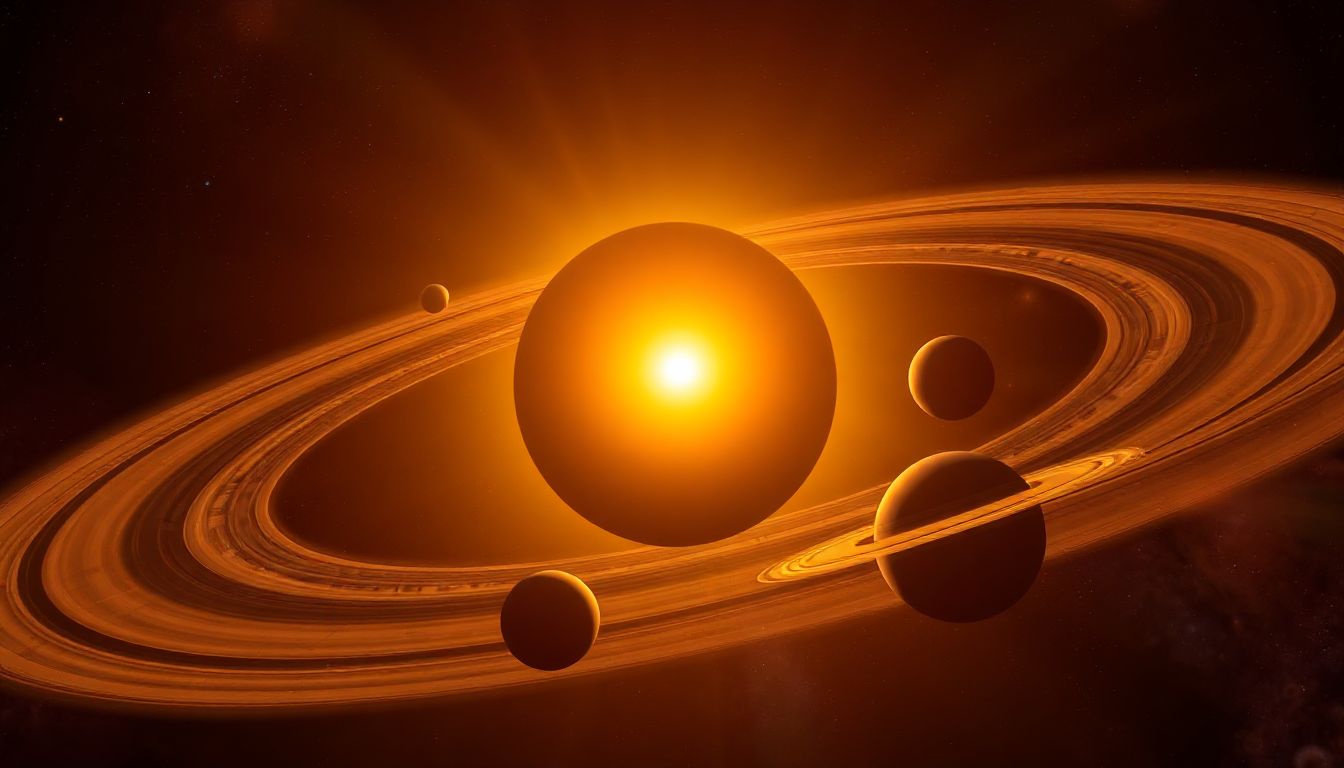
The vast expanse of space, dotted with celestial bodies, has captivated humanity for millennia. Our solar system, a gravitational ballet of planets, moons, asteroids, and comets, is our immediate cosmic address. This article will take you on an immersive journey, exploring its diverse components, the forces that shape it, and our ongoing search for understanding. Prepare to be amazed by the sheer scale and wonder of the celestial architecture that surrounds us.
From the fiery heart of the Sun to the icy reaches of the Oort Cloud, each element plays a crucial role in the dynamic balance of our solar system. We will look at the traits of each planet, their special moons, and the interesting smaller bodies that fill this cosmic area. This offers a full look for anyone curious about space.
The Sun: Our Star, Our System’s Anchor
What is the Sun?
The Sun is a G-type main-sequence star, known as G2V. It is a giant ball of hot plasma, mostly hydrogen and helium. Inside, nuclear fusion changes hydrogen into helium, making huge amounts of energy. This process gives us the light and heat we need. Our Sun is about 4.6 billion years old and has billions of years left.
Solar Processes and Influence
The Sun’s surface shows features like dark sunspots, bright solar flares, and coronal mass ejections (CMEs). These events blast energy and particles into space. When they reach Earth, they cause space weather. This can affect satellites, power grids, and create beautiful aurora lights in our sky.
The Sun’s Vital Role
The Sun is key for life on Earth. It gives us the light needed for plants to grow through photosynthesis. It also keeps our planet warm enough to live on. Its powerful gravity holds all the planets, asteroids, and comets in our solar system in orbit. Without the Sun, our cosmic home would not exist.
The Inner Planets: Rocky Worlds Close to Home
Mercury: The Swift Messenger
Mercury is the smallest planet and closest to the Sun. It has extreme hot and cold changes from day to night. Its surface is full of craters, like our Moon. Mercury has a very thin layer of gas around it, called an exosphere. Its path around the Sun and its spin are quite unusual.
Venus: Earth’s Twin in Name Only
Venus is similar to Earth in size, but it is not a friendly place. It has a runaway greenhouse effect, making it very hot. Its air is thick and toxic, mostly carbon dioxide. Surface temperatures are high enough to melt lead. Venus also spins the wrong way compared to most planets.
Earth: Our Blue Marble
Earth is special because it has conditions that support life. We have liquid water, a protective atmosphere, and a magnetic field. This field shields us from harmful solar radiation. Our planet also has active geology and many different kinds of plants and animals. Earth is truly a unique home in space.
Mars: The Red Planet’s Potential
Mars gets its red color from iron rust on its surface. Scientists have found strong proof that liquid water once flowed there. The search for signs of past or present life continues today. Missions like the Perseverance rover are exploring Mars, looking for answers. We hope to learn more about this intriguing planet.
The Outer Planets: Gas and Ice Giants
Jupiter: The King of Planets
Jupiter is the biggest planet in our solar system. It is mostly hydrogen and helium gas. Its most famous feature is the Great Red Spot, a giant storm bigger than Earth. Jupiter has a very strong magnetic field and many moons. Four of its largest moons, Io, Europa, Ganymede, and Callisto, are known as the Galilean moons.
Saturn: The Jewel of the Solar System
Saturn is known for its stunning ring system. These rings are made of billions of ice pieces and dust. Like Jupiter, Saturn is a gas giant. Its atmosphere is also mostly hydrogen and helium. Titan, one of Saturn’s moons, is special because it has a thick atmosphere of its own.
Uranus: The Tilted Ice Giant
Uranus is unique because it spins on its side, almost at a 90-degree angle to its orbit. This tilt causes very long and extreme seasons. It is an ice giant, made of water, methane, and ammonia ices. Uranus also has faint rings, though they are not as bright as Saturn’s.
Neptune: The Distant Blue World
Neptune appears deep blue due to the methane in its atmosphere. It is known for having the strongest winds in the solar system. While it once had a feature called the Great Dark Spot, similar to Jupiter’s, it has since vanished. Triton, Neptune’s largest moon, orbits the planet backward.
Beyond the Planets: The Solar System’s Diverse Denizens
Asteroid Belt: Remnants of Formation
The asteroid belt lies between Mars and Jupiter. It holds millions of rocky objects of various sizes. These asteroids are leftovers from when our solar system first formed. Ceres, the biggest object in this belt, is also classified as a dwarf planet.
Kuiper Belt and Dwarf Planets
Beyond Neptune is the Kuiper Belt, a vast area filled with icy bodies. This region is home to many dwarf planets. Pluto is the most famous dwarf planet in the Kuiper Belt. Other notable dwarf planets include Eris, Makemake, and Haumea, each with unique characteristics.
Comets and the Oort Cloud
Comets are often called “dirty snowballs” because they are made of ice, dust, and rock. Many comets come from the Kuiper Belt or the distant, theoretical Oort Cloud. As a comet gets close to the Sun, its ice melts, forming a glowing head (coma) and a long tail of gas and dust.
Exploring Our Solar System: Past, Present, and Future
Historical Discoveries and Missions
Early astronomers used basic telescopes to observe the planets. Over time, space missions greatly expanded our knowledge. The Voyager program, launched in the 1970s, sent probes past all the outer planets, giving us our first close-up views of these distant worlds. These missions changed how we see our solar system.
Current Exploration and Research
Today, many missions continue to explore our cosmic neighborhood. The James Webb Space Telescope observes distant galaxies and exoplanets. Mars rovers continue to search for signs of life on the Red Planet. Probes are also studying Jupiter and Saturn in detail. Scientists are trying to answer big questions, like where water came from and if life exists beyond Earth.
The Future of Solar System Exploration
The future of solar system exploration looks bright. Plans include sending humans to Mars. There are also missions planned to explore icy moons like Europa and Titan. New technologies will help us understand these places even better. We might even find ways to use resources from other celestial bodies someday.
Conclusion
Our solar system is a lively and amazing place. It shows the grand story of how the cosmos came to be. From the Sun that gives us life to the icy edges of the Kuiper Belt, every part tells a story of creation and change. Ongoing exploration promises to show us even more about our place in the universe. It might even reveal if life exists beyond our home planet.
The continuous effort to understand our solar system is more than just science. It reflects humanity’s deep interest and wish to find out what is unknown. By studying these celestial bodies, we learn about the universe. We also grow to value our own unique planet even more.

Recent Comments